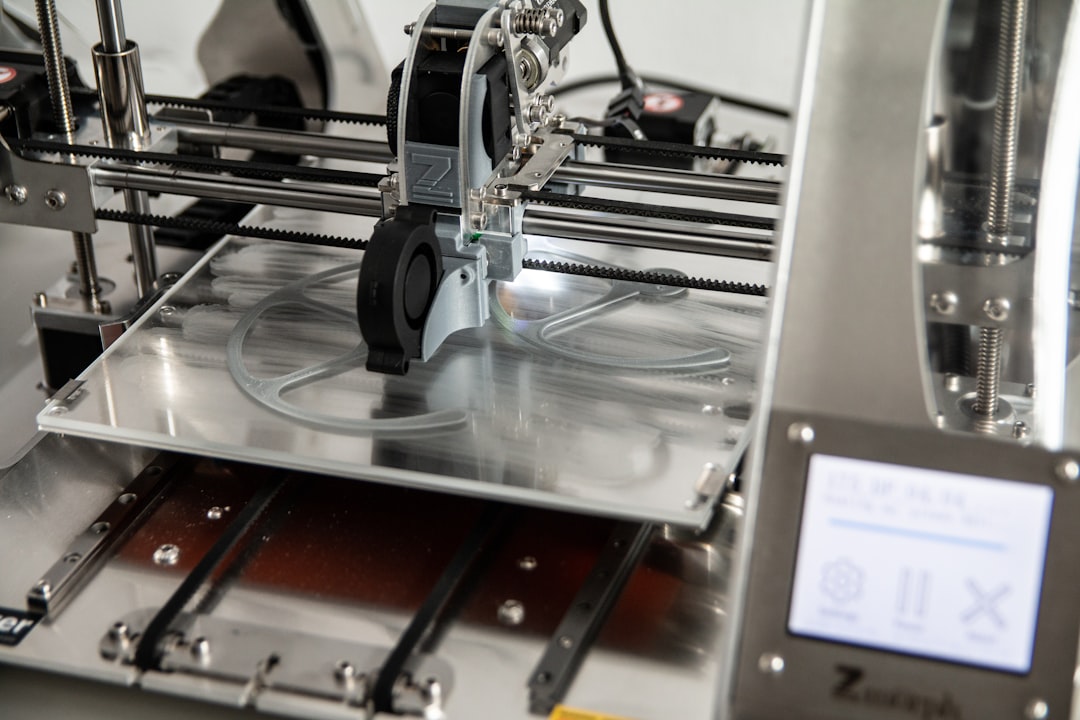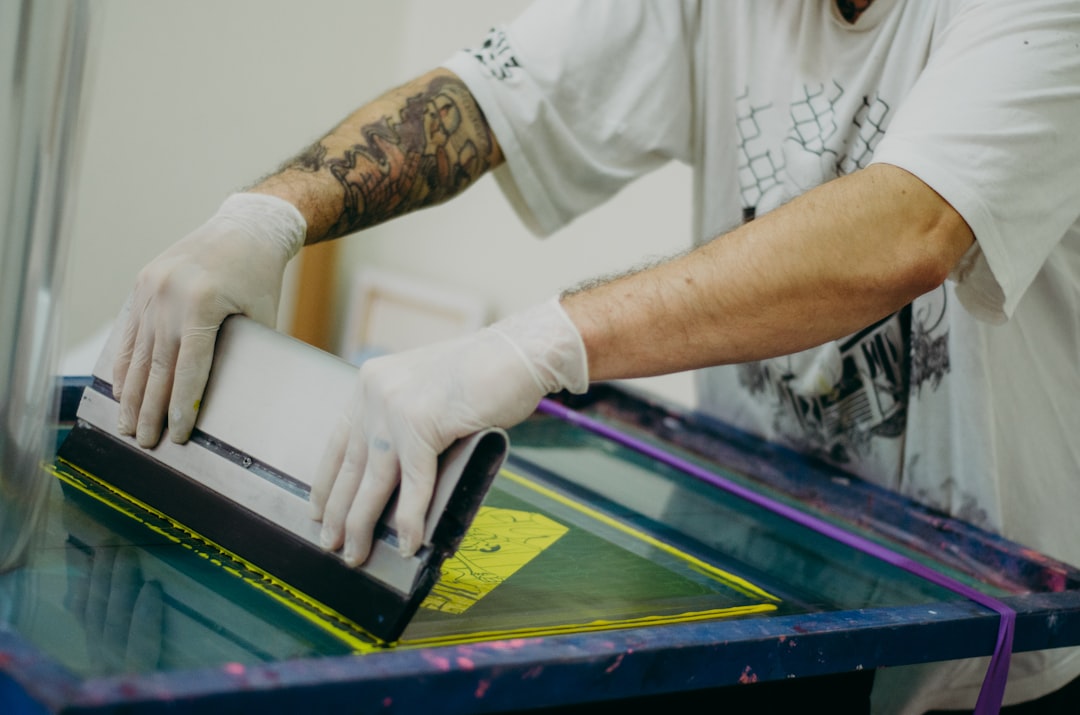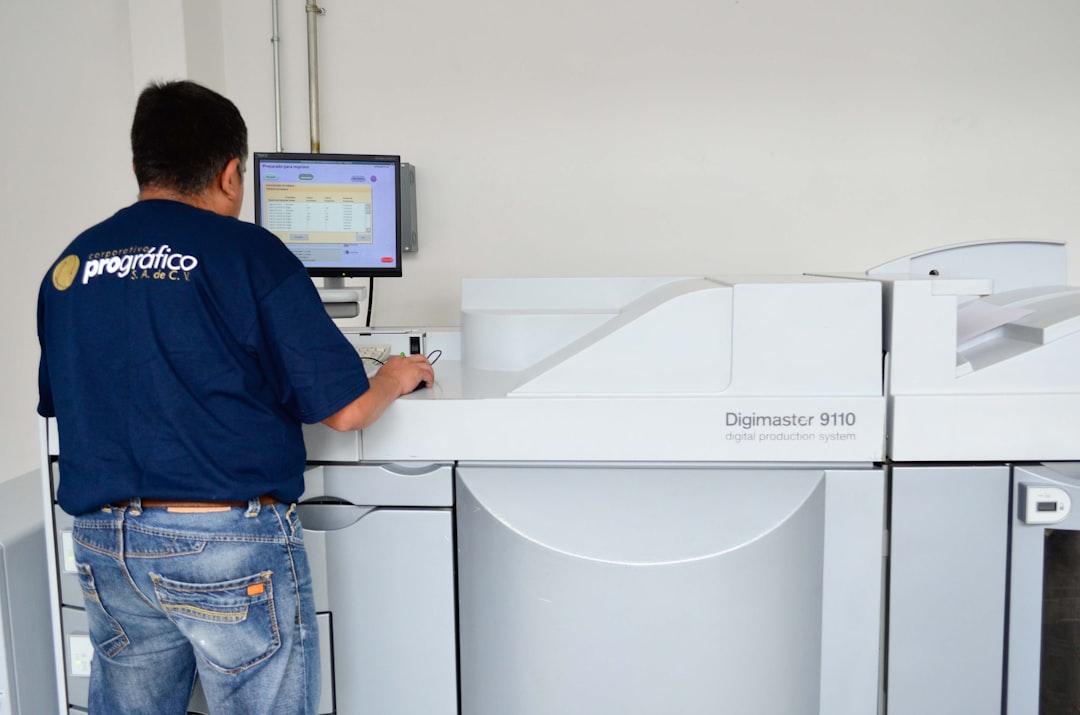

Engage prospects with a scan and streamline customer engagement with FREE QR code marketing tools by Sona – no strings attached!
Create a Free QR CodeFree consultation

No commitment

Engage prospects with a scan and streamline customer engagement with FREE QR code marketing tools by Sona – no strings attached!
Create a Free QR CodeFree consultation

No commitment
QR codes have become essential tools for bridging offline engagement with online action in the printing technician training industry. Training organizations and educational institutions can modernize learning experiences, reduce technical barriers, and capture high-quality leads through integrated QR workflows without the need for specialized hardware.
Many training providers face critical challenges when it comes to capturing potential student data, particularly when traditional tracking systems fail to record interactions with printed materials. QR codes allow trainers, students, and employers to access current resources, certification programs, and training modules instantly by scanning codes placed on course materials, equipment, or signage. This streamlines access and captures valuable engagement information, giving visibility to both known and previously anonymous prospects.
This guide explains how to use QR codes to enhance printing technician training, improve lead generation, and deliver measurable results by solving challenges related to tracking, personalization, and actionable insights in today’s competitive training landscape.

Many technician training programs struggle with fragmented lead tracking, missing crucial opportunities because expressions of interest are never properly captured. A flyer picked up at a career fair, a brochure handed out in a lab tour, or a manual used during a workshop often fails to drive measurable action. QR codes bridge the gap between physical training settings, printed reference materials, and digital modules, making it easier to generate course enrollments, distribute certification details, and collect feedback or inquiries from potential trainees.
Replacing analog processes with QR-enabled experiences creates a smooth path from interest to action. Printed sign-up sheets can be replaced by QR-scannable forms that sync into your CRM. Paper feedback cards can be upgraded to mobile surveys that auto-route to the right team. Static course lists can link to dynamic landing pages that are always up to date. This change reduces administrative overhead, improves data quality, and captures intent in the moment. Platforms like Sona QR handle code creation, routing, and analytics so your staff can focus on instruction and coaching.
Here’s how to do it effectively:
A well-structured QR program transforms every printed touchpoint into a measurable moment while delivering value to the learner: faster access to information, fewer steps to take action, and clear guidance toward the next stage of their development. The same infrastructure powers both recruitment and instruction, which amplifies results across your entire training operation. Start creating QR codes for free.

Outdated data and overlooked activity can weaken recruitment and delivery efforts. The printing industry is evolving rapidly, requiring agile learning and up-to-date content. Trainees must master a mix of hardware, software, color management, substrates, and safety protocols. Printed materials alone cannot keep pace with updates, while legacy tools fail to capture how prospective students interact with resources. QR codes resolve typical pain points by connecting offline action to online workflows and by turning every interaction into a trackable signal.
Consider how many critical materials live in print: classroom handouts, equipment manuals, appointment cards for lab time, signage in workshops, certification checklists, safety posters, and field training guides. Each of these can become a gateway to dynamic content, richer instruction, and measurable engagement. With QR codes, your organization can reduce friction, update content without reprinting, and personalize experiences for different audiences like prospects, active trainees, and employers.
These capabilities are crucial on appointment cards, classroom handouts, equipment manuals, and safety posters used in printing technician training. With better visibility into who engages where, you can plan inventory, schedule workshops, and deploy instructors more effectively while ensuring no high-intent inquiry falls through the cracks.
QR code versatility is essential for effective training workflows. The right format helps you match intent to action, and it shapes what happens immediately after the scan. In printing technician training, choose formats that align with the context of use, whether that is on the shop floor, in the classroom, or at an industry event.
Dynamic QR solutions allow real-time edits and robust analytics, making them best for programs that evolve, rotating course catalogs, and placements that require attribution. Static codes suit evergreen materials like a universal safety policy poster or a long-lived equipment quick-start guide. By mixing dynamic and static codes intentionally, you can track high-value interactions while keeping reference materials stable and reliable.

Organizations often miss prospects by overlooking where interest first emerges. Your most valuable opportunities appear in places where people are already engaged with printing technology or are considering career options. QR codes help surface that intent and guide people into your digital funnel.
Start by mapping common physical touchpoints across the learner journey: awareness moments at expos, consideration moments during facility tours, and conversion moments when trainees request certification or job placement support. Then baseline engagement for each placement and iterate on content, calls to action, and positioning.
When you deploy QR codes in these environments, you not only collect leads but also learn which channels drive interest. Over time, you can allocate budget toward the most productive placements and refine messaging based on what resonates.

QR codes surface learner interest that might otherwise be missed across multiple touchpoints. They also enrich instruction by tying physical equipment and materials to deeper digital learning. When you combine the two, you create a tightly integrated experience that guides people from discovery through enrollment and into successful certification.
Below are practical applications with outcomes your team can measure. Consider piloting two or three use cases, then scale based on results.
Each use case strengthens your ability to connect the right person to the right next step. With a centralized platform like Sona QR, you can maintain content, track uptake, and push scan data into your CRM or LMS for follow-up.
Every QR scan is a valuable behavioral signal. It captures context about what someone wants, where they are, and when they are ready to engage. By deploying multiple QR codes across touchpoints, you can automatically segment your audience and use that data to fuel precise retargeting and follow-up campaigns across email, SMS, and paid media. For deeper strategy on buying signals, see Sona’s blog on intent data. For paid activation, use intent-driven retargeting.
Start by defining lifecycle stages for your audiences: prospective students, current trainees, alumni, and employers. Then identify the specific questions each group is trying to answer. For example, prospects may want to assess program fit, while current trainees need lab access scheduling and exam prep materials. Use distinct QR codes for each situation to create clean segments without extra manual work.
For printing technician training, powerful audience distinctions include high school prospects versus career changers, employer-sponsored apprentices versus self-funded learners, pre-certification versus post-certification trainees, and local versus out-of-region prospects. These distinctions inform your messaging and next steps, increasing the likelihood of conversion and completion.
Disconnected analytics can weaken campaign impact. QR codes unify your print campaigns and digital follow-ups, making every brochure, poster, and demonstration measurable. The goal is not just to link a scan to a website. Instead, treat each code as a step in a structured journey that you can orchestrate and optimize over time.
When you embed QR codes consistently across channels, you can identify which materials attract interest and which sequences convert. This allows you to tighten your creative strategy and invest in what works. Use consistent naming conventions, UTMs, and tagging so your analysis is clean and comparable across placements.
QR codes serve as the offline onramp to your digital marketing engine. With a centralized platform like Sona QR, you can manage all codes, monitor performance, and sync scan data with your CRM and ad platforms. This alignment creates a more responsive and data-driven marketing mix.
A clear execution plan helps your team move from idea to measurable outcomes without unnecessary complexity. Treat your first QR campaign as a pilot with defined goals, a limited number of placements, and a tight feedback loop. Once you have data, refine your creative, targeting, and routing to increase performance.
The steps below capture a repeatable process. Use them to standardize deployment across cohorts, locations, and events. For each step, assign ownership and timelines, and use Sona QR to keep code creation, metadata, and analytics in one place.
With these steps, your team can launch campaigns that are not only polished but also measurable. Start small, learn quickly, and scale placements with the best performance. Consistency in process and tooling pays compounding dividends.
Tracking must go beyond counting scans. To prove impact, you need to connect scans to downstream outcomes like form fills, course enrollments, lab bookings, certification completions, and employment placements. By instrumenting the full path from scan to revenue, you can optimize spend and focus on the initiatives that matter most.
Many organizations stop at top-of-funnel metrics and miss the opportunity to attribute value. A dashboard that shows scan volume by location is useful, but a pipeline view that shows how scans translate into enrollments and certifications is transformative. Sona QR captures real-world engagement, and Sona.com extends this by linking QR interactions to CRM records, web analytics, and multi-touch attribution. For methodology, see Sona’s guide to offline attribution.
The result is a performance loop you can trust. Instead of guessing which printed assets work, you will know. Instead of sending generic follow-ups, you will tailor outreach based on real behavior. This lets training leaders defend budgets, align teams, and invest in growth confidently.
Increasing the impact of your training marketing efforts requires intentional design, strong data hygiene, and staff enablement. QR codes work best when they are embedded into a broader journey and when your team is prepared to promote them in person. Choose the tactics that align with your mix of print, events, and on-site instruction.
Focus on repeatable practices that scale across courses and cohorts. Create internal templates for code frames, CTAs, and landing pages so each new campaign is fast to deploy and consistent in look and feel.
For creative deployment, embed QR codes on laminated progress-tracking cards that students carry during multi-week modules so they can log practice hours and unlock tips. You can also place codes on badge lanyards at career fairs that route to a short fit assessment, then send personalized program recommendations based on responses.

Innovative organizations demonstrate the value of QR adoption by translating physical engagement into measurable outcomes. The examples below showcase how small changes in placement and routing can have outsized effects on enrollment, safety, and learner satisfaction.
These stories are not only about scan counts. They highlight how QR codes, when paired with strong content and follow-up, guide users through the journey. Consider which of these tactics you can pilot in your environment, then adapt for your brand voice and training calendar.
As you design your own campaigns, look for ways to integrate QR codes into moments of curiosity or pride. A learner finishing a perfect color calibration or mastering a complex finishing technique is primed to share feedback, request advanced coursework, or promote your program to peers.
Proper execution prevents missed opportunities. QR campaigns succeed when creative, placement, and follow-up work in harmony. Conversely, small missteps in design or positioning can tank scan rates and distort analytics. Build a simple checklist and assign clear ownership to avoid common issues.
Staff readiness is also critical. If instructors and support teams are comfortable explaining why scanning helps the learner, engagement rises. Provide them with a cheat sheet that lists QR locations, the benefit of each scan, and troubleshooting tips for common device issues.
QR codes are more than just shortcuts. They are strategic tools that help training organizations overcome data silos, anonymous engagement, and underused touchpoints. By making every material, workstation, and recruitment flyer a gateway to engagement, leaders ensure opportunities are not wasted and gain actionable data for continuous improvement.
With thoughtful use, QR codes drive real results: higher lead quality, increased certification rates, and more connected workflows that link hands-on training to rich digital experiences. A data-driven QR strategy allows printing technician training teams to capture demand where it starts and turn every scan into a measurable step toward workforce advancement. Tools like Sona QR and Sona.com make it practical to launch, track, and attribute these efforts so you can scale with confidence.
QR codes are revolutionizing printing technician training by transforming traditional materials into interactive, lead-generating tools. They enable training providers to capture valuable learner data, track engagement, and streamline follow-ups, ultimately turning static manuals and guides into dynamic gateways for customer acquisition and improved training outcomes. Imagine instantly knowing which training modules drive the most interest and tailoring your approach to maximize learner success.
With Sona QR, you can effortlessly create dynamic, trackable QR codes that update in real time—no need to reprint training materials. This means you can connect every scan to actionable insights, refine your training campaigns on the fly, and build a stronger pipeline of qualified leads. Start for free with Sona QR today and turn every scan into a powerful step toward growing your training business.
Printing technicians must master hardware, software, color management, substrates, safety protocols, and use digital tools like QR codes to connect printed materials with online resources.
QR codes connect offline printed materials to dynamic online content, improve lead capture, enable real-time updates without reprinting, and provide actionable analytics to optimize engagement and training workflows.
Train instructors and support staff with clear talking points explaining the benefits of scanning QR codes, provide cheat sheets with code locations and purposes, and ensure they can troubleshoot common device issues.
Use high contrast and sufficient quiet zones, choose appropriate code size for viewing distance, avoid busy backgrounds and problematic surfaces like curved or glossy areas, and test scannability under expected lighting conditions.
Dynamic QR codes with real-time content updates, detailed scan analytics, CRM integrations, and audience segmentation for retargeting are key trends enhancing printing technician training programs.
Embed QR codes on manuals, equipment labels, signage, brochures, and event materials, use platforms like Sona QR for code creation and tracking, and align codes with training objectives for seamless digital engagement.
QR codes make printed materials interactive and measurable, enable instant access to updated digital content, enhance lead generation, reduce administrative overhead, and improve learner engagement and feedback collection.
Test QR codes across multiple devices and lighting conditions, use proper print finishes to avoid glare or ink spread, maintain adequate size and quiet zones, position codes on flat surfaces with good contrast, and avoid placing them on curved or reflective areas.
Use Sona QR's trackable codes to improve customer acquisition and engagement today.
Create Your FREE Trackable QR Code in SecondsJoin results-focused teams combining Sona Platform automation with advanced Google Ads strategies to scale lead generation

Connect your existing CRM

Free Account Enrichment

No setup fees
No commitment required

Free consultation

Get a custom Google Ads roadmap for your business






Launch campaigns that generate qualified leads in 30 days or less.
